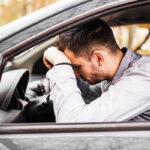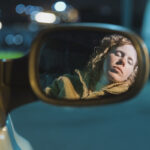Drowsy Driving: Dangers, Symptoms, and Prevention
You’ve likely heard of how dangerous (and illegal) drunk driving is, but did you know that drowsy driving is just as hazardous? According to one study, after being awake for 24 hours, a person behind the wheel is just as impaired as someone having a blood alcohol level of 0.1%, which is over the legal limit in most states.
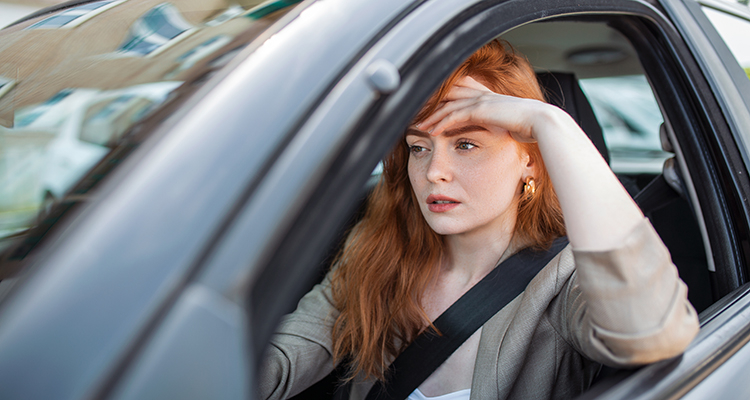
Both drunk and drowsing driving significantly impair a person’s reaction time, ability to reason, alertness, and level of awareness. Under these circumstances, a person can’t make the kind of split-second decisions required to stay safe on the road. Drowsy driving isn’t just dangerous for the driver, either. Getting behind the wheel when suffering from sleep deprivation is also putting other motorists and pedestrians at risk.
In this article, we’ll take a closer look at what drowsy driving is, the signs you should pull over, and how to prevent it. We’ll also cover some alarming and unsettling statistics about drowsy driving so you can better understand the potential dangers of operating a vehicle while sleep deprived.
Content
What is Drowsy Driving?
Drowsy driving is exactly what it sounds like – driving a vehicle when you’re feeling extremely tired or sleepy. This can happen under a variety of circumstances. Whether you’re leaving work late at night, haven’t been sleeping well lately, or have been awake for an unreasonable number of hours, if you get behind the wheel when you can barely keep your eyes open, you’re guilty of drowsy driving.
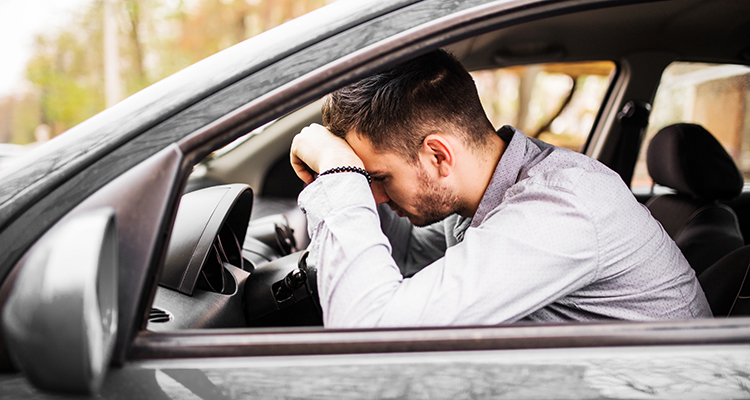
In some situations, drowsy driving could be a sign of an undiagnosed medical condition or sleep disorder. It may also be an unpleasant side effect of certain medications. Many over-the-counter and prescription medicines list “drowsiness” as a side effect and warn against operating heavy machinery while taking them. Even if you’re not under the influence of alcohol or drunk, consuming any amount of alcohol in combination with certain medications can cause excessive drowsiness and impairment.
Another thing that makes drowsy driving so dangerous is the fact that no one can predict when sleep will take over. You may think you’re alert enough to drive but the calming vibrations of the vehicle, soothing music and monotony of driving could instantly lull you to sleep. Even if you manage to stay awake, drowsiness affects your ability to make good decisions, delays your reaction time when it comes to braking or steering, and makes it more difficult to concentrate. These side effects may be worse at night, during the very early morning hours, or when driving in the dark.
How Common is Drowsy Driving
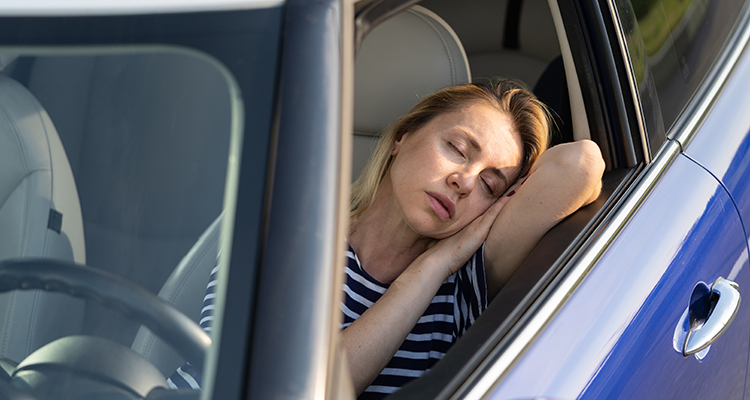
While there’s no definitive way to know how often people drive while drowsy, research shows that it’s disturbingly common. A fairly outdated study conducted by The National Sleep Foundation found that 60% of adult drivers admitted to driving while drowsy over the span of a year. Another report by the CDC stated that 1 in every 25 adults fell asleep behind the wheel every month.
Common Causes of Drowsy Driving
People experience drowsy driving for a variety of reasons. While some people may not realize they’re too tired to drive, knowing the causes means making smart decisions before getting behind the wheel. Here are some reasons why you might experience drowsy driving.
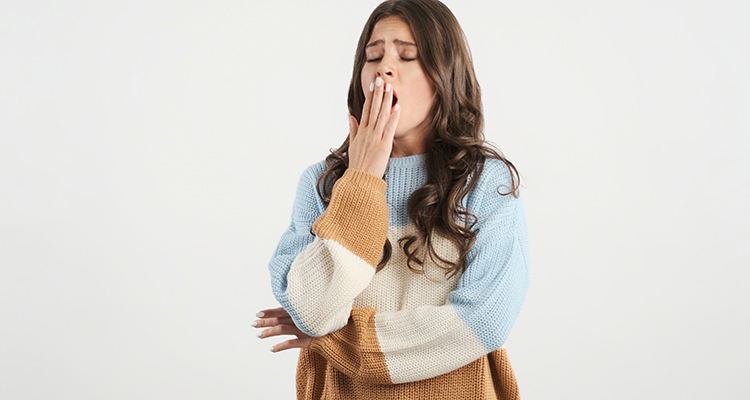
Sleep Deprivation
One of the main causes of drowsy driving is lack of sleep. The CDC recommends that adults get between 7 and 9 hours of sleep per night. Unfortunately, 1 in 3 adults doesn’t even come close to hitting this mark. Whether it’s due to their work schedule, insomnia, or other undiagnosed sleep disorders, chronic sleep deprivation can take a serious toll on both your mental and physical health.
Excessive daytime sleepiness is one of the primary symptoms of sleep deprivation and may include microsleeps. Microsleep describes very short periods of sleep lasting mere seconds rather than minutes or hours. If you’ve ever dozed off while watching television or reading, you probably experienced microsleep. Nodding off while driving is extremely dangerous. It only takes a split second for your car to veer off the road, into oncoming traffic, or for you to miss important driving directions, warning signs, or changes in traffic patterns.
Sleep Disorders
Another leading cause of drowsy driving are sleep disorders – both diagnosed and undiagnosed. Many people have a sleep disorder and don’t even realize it. This can range from insomnia or narcolepsy to sleep apnea and other more serious conditions. If you find yourself feeling increasingly tired and groggy during the day, it could be a sign that you’re not getting adequate sleep at night – even if you think you are. Many common sleep disorders cause your sleep to become interrupted, restrictive, and less restorative. If these symptoms carry over into the daytime hours, you may experience drowsy driving.
Medications
There are hundreds of medications that list “drowsiness” as a common side effect. From painkillers to antihistamines and other cold and flu medications, taking these OTC and prescription drugs before getting behind the wheel could lead to some serious impairments. Even some natural and dietary supplements taken at night can result in lingering grogginess in the morning. Be sure to read the labels carefully before taking these medicines or driving a vehicle. Whenever possible, take your prescribed medications at night or when you plan to stay off the road for at least several hours.
Alcohol Consumption
Drowsy driving is often compared to drunk or buzzed driving. But if you’re already tired or taking medications that cause excessive sleepiness and you consume alcohol, you’re creating a recipe for disaster and drowsy driving. Alcohol can worsen drowsiness and further compromise your reaction times and ability to make decisions or use good judgment. Drinking while intoxicated is not only dangerous and irresponsible, but it’s illegal.
The Time of Day
Another factor that can increase your risk of drowsy driving is the time of day. Studies show that the most drowsy driving accidents occur between midnight and 6:00 in the morning or in the mid-afternoon.
These are the two times of the day when sleepiness is said to peak. Between midnight and 6:00, am most people are sleeping. If you’re awake and behind the wheel, you’re likely experiencing the onset symptoms of sleep deprivation. It’s also dark at these times, making it more difficult to see and concentrate while driving.
If you’ve ever experienced hitting that “afternoon wall”, you know that the early- to mid-afternoon is also linked to excessive sleepiness. Studies show that most people feel tired 12 hours after coming out of deep sleep. So, depending on what time you woke up that morning or went to bed the night before, you may find yourself feeling overwhelmingly tired in the afternoon.
Risk Factors for Drowsy Driving
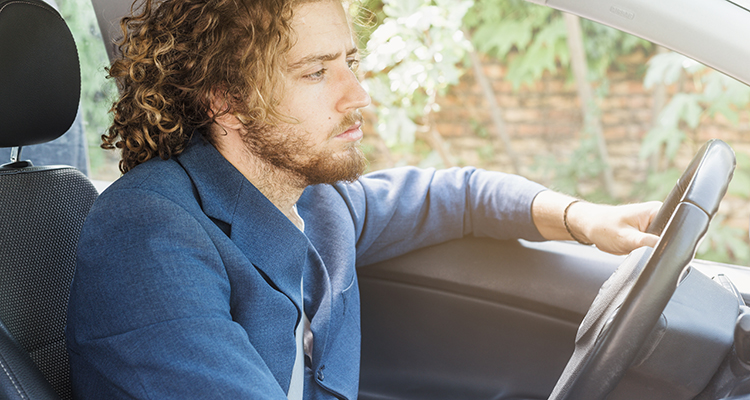
Age, occupation and overall health can all put you at greater risk of experiencing drowsy driving. If you fall into any of these categories, you may be at greater risk of experiencing an automobile accident due to excessive sleepiness. Knowing this could put you on high alert and help you take the necessary precautions to stay safe on the road.
- Truck drivers, bus drivers, and other occupations that involve driving long distances or driving for long periods of time
- People who work overnight shifts, irregular hours, overtime, or other long work hours
- Individuals with undiagnosed sleep disorders or serious sleep troubles including sleep apnea and insomnia
- Teenagers and new drivers with less driving experience
- Individuals with high rates of sleep insufficiency
- Elderly individuals with underlying medical conditions or that are taking several medications that may cause drowsiness
- Anyone with compromised reaction times, reflexes, or the ability to make split-second decisions
More Statistics About Drowsy Driving

Some people think that driving while tired isn’t comparable to driving while impaired or under the influence of drugs or alcohol. These statistics on motor vehicle accidents, crashes, fatalities, and other incidents might make you think again.
- Drowsy driving was a factor in over 91,000 accidents in 2017
- In 2017, 50,000 people were injured and 800 people died due to drowsy driving accidents
- In 2020, 663 deaths were reported as the result of drowsy driving
- As many as 6,000 fatal accidents per year may be caused by a drowsy driver
- Adults who sore or sleep fewer than 6 hours per night are more likely to fall asleep while driving than adults who don’t snore or get 7 hours or more of sleep
- Most drowsy driving accidents occur on highways and rural roads
- Often, these crashes involve a single driver that runs off the road at a high rate of speed with no signs of braking
- More than 97% of drivers disapprove of drowsy driving
- 96% of drivers agree that driving while drowsy is perilous
- Nearly 25% of drivers admit to driving while tired within the last 30 days
- More drowsy driving crashes result in deaths and injuries that accidents that don’t involve drowsy driving
- Out of 140,000 drivers, over 4% reported falling asleep behind the wheel within the last 30 days
- 20% of all accidents involve a driver who is sleep deprived
- 35% of drowsy drivers fall asleep at the wheel between the early morning hours and late afternoon
- Accroding to the Department of Health in New York, the most drowsy driving crashes occur between 1:00 p.m. and 4:00 p.m. and 2:00 a.m. and 6:00 a.m.
Signs It’s Time to Pull Over
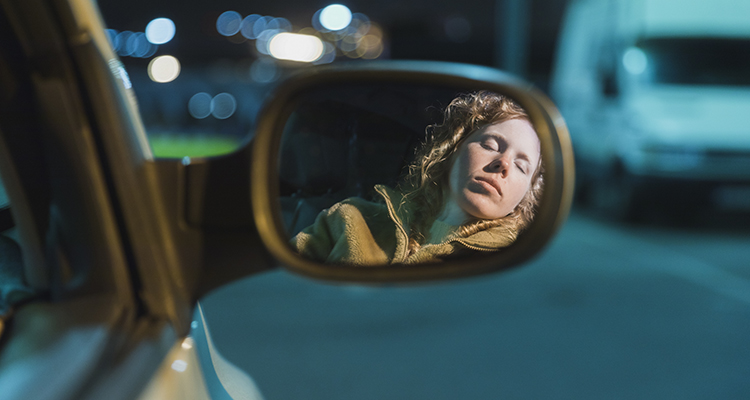
Most people shrug off or ignore the warning signs of drowsy driving. Whether you feel your eyelids getting heavy or your head bobbing up and down, your body sends a variety of signals when it’s on the verge of sleep. If you experience any of the following symptoms or warning signs while driving, you may be at risk of nodding off and should find a way to get off the road and to a safe location as soon as possible.
- Feelings of dozing or nodding off
- Droopy or tired eyes
- Increased blinking
- Frequent yawning
- The inability to remember where you just were
- Drifting or swerving into other lanes
- Hitting the “rumble strips” on the side of the road
- Missing your exit, turn, or other important road signs
- Tailgating cars in front of you
- Driving through stop signs or intersections
- Sitting at a traffic light after it turns green
- Difficulty maintaining the speed limit
If you experience any of these symptoms while driving, it could mean that you’re at risk of falling asleep. Before your drowsy driving causes an accident, pull off the road safely and either take a nap, get a cup of coffee, or take a refreshing walk and stretch. Only return to the road when you feel more awake and prepared to continue your journey safely.
What is Sleep Debt and What Role Does it Play in Drowsy Driving?
The recycle rate of the human brain is approximately 16 hours. When you stay awake for longer than this, you increase your risk of experiencing sleep debt. Sleep debt, or sleep deficit, is the result of not getting enough sleep. Sleep debt is the leading cause of feeling drowsy behind the wheel.
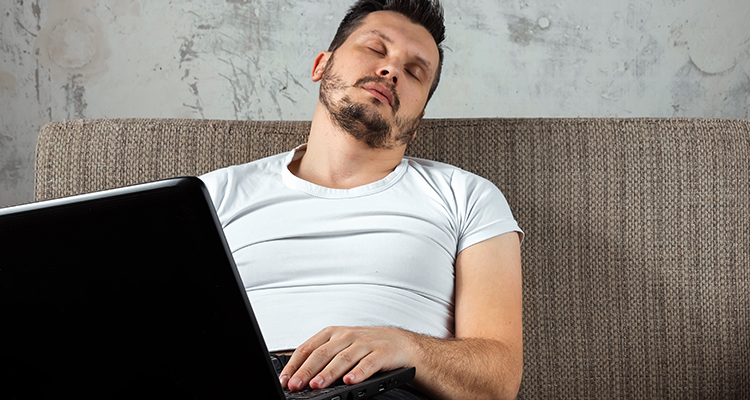
While most people attribute sleep deficits to being awake for hours on end, this isn’t always the case. Missing even just one or two hours of sleep per night can still result in sleep debt that negatively impacts your ability to drive. For example, one study shows that being awake for 18 hours straight (which is only 2 hours longer than what’s recommended) can result in cognitive impairments comparable to a blood alcohol level of 0.05%. If you continue to miss even one hour of sleep for 10 consecutive days, your brain function will be just as delayed as if you’d been awake for 24 hours straight. With that being said, drowsy driving can occur even after just a few nights of poor sleep.
When you sleep less than seven hours per night, you drastically increase your risk of getting into an accident. Drivers that only sleep between five and six hours a night are at an even greater risk of being involved in or causing a collision. For anyone that sleeps less than four hours per night, their risk increases 11 times! If you make a habit out of driving while tired, you could fall asleep or experience microsleep one out of every three times you get on the highway. You’re also 10 times more likely to get into an accident than someone who’s fully rested.
Tips for Staying Alert Behind the Wheel
There are a few ways you can avoid drowsy driving altogether and stay awake behind the wheel.
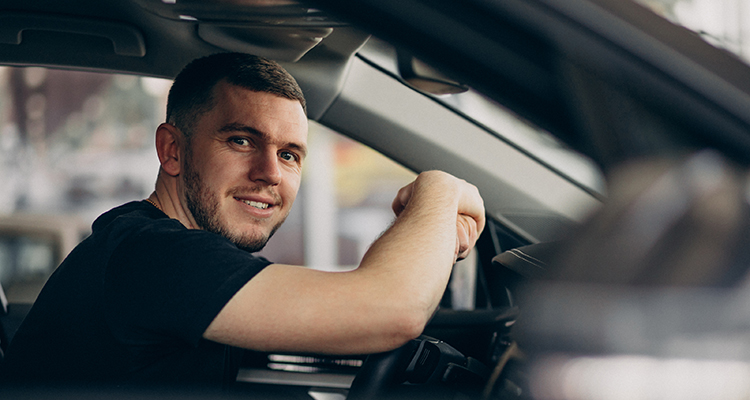
Make a Plan
Instead of planning one continuous stretch of driving, try to break your trip up into smaller segments. If possible, schedule a few days to complete a very long journey. Create a plan that doesn’t require you to stay behind the wheel for multiple hours at a time.
If you can’t avoid an extra-long trip, be sure to plan several stops along the way. During these rest periods, get a caffeinated beverage, stretch, take a quick nap, or perform other activities that help you feel more awake and alert.
Avoid Driving at Night and at Drowsy Times of the Day
The human body has an internal clock that runs on a 24-hour cycle. This sleep-wake cycle is what allows your body to unwind at night and prepare for sleep and gradually become more alert in the morning. As your body naturally moves through this cycle, it experiences dips in energy levels at certain times of the day. For most people, these “drowsy” hours are between midnight and 6:00 am and sometime in the mid-to late afternoon. If possible, avoid getting behind the wheel between these hours.
Get a Good Night’s Sleep the Night Before
If you know that you have a long day of driving ahead, try to get a good night’s sleep the night before. Avoid staying up too late or performing over stimulating activities like exercising or using digital devices close to bedtime. These habits can keep you awake at night or cause disrupted sleep, resulting in excessive daytime sleepiness the next morning.
Don’t Drive Alone
Sometimes, the best remedy for drowsy driving is to have someone to talk to. If possible, bring a driving buddy or companion on your trip. This person can either take turns behind the wheel to give you a break or keep you alert, awake, and talking throughout the drive to help ward off drowsiness.
Use Caffeine
Although caffeinated beverages shouldn’t be your “go-to” solution for preventing and avoiding drowsy driving, they can act as a quick fix in a pinch. If you feel yourself nodding off or getting excessively sleepy, stop for a cup of coffee, energy drink, or caffeinated soda or sports drink. Just beware of the fact that after the initial pick me up from the caffeine wears off, you may find yourself getting sleep again.
Beware of “Tricks” to Keep You Awake
Other quick fixes for waking you up when you’re feeling drowsy behind the wheel include opening the windows, turning up the music, and cranking the air conditioner. While these tactics may work momentarily, the effects won’t last long. They may also take your eyes and attention off the road, so only use these tactics in an emergency and for a short period of time. The real solution is to pull over and take a rest.
Adopt Healthier Sleep Habits Today
The best way to prevent drowsy driving is to get adequate, quality sleep. This means getting between 7 and 9 hours of sleep per night and adopting other healthy sleep habits. Create a relaxing sleep environment and a nighttime wind-down routine that includes calming activities and avoiding electronic devices. Perform the same activities at the same time each night and set an alarm to wake up at the same time each morning. This helps establish a consistent sleep schedule and balance your body’s circadian rhythm.

Adopting healthy sleep habits has other benefits as well including increased energy, reduced risk of developing certain medical conditions, and improved cognitive function. Need help improving your sleep hygiene? Click here to learn more about how Somnus Therapy works and how it can transform your life today!

